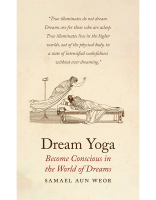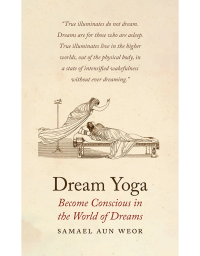This small collection of writings offers practical guidance from the ancient, universal knowledge of awakening in the internal worlds, otherwise known as dream yoga, lucid dreaming, astral projection, astral travel, or out-of-body experiences (OBEs). The purpose of this book is to empower you with the understanding and skills necessary to acquire your own direct experience of the worlds that exist beyond three-dimensional matter. As such, this is a teaching of Gnosis, a Greek word which refers to knowledge that one acquires through one’s own experience, as opposed to knowledge we have heard or been told. “Gnosis” is the name of a timeless and universal teaching that has been present in many times and places around the world, appearing with different names and faces, but always teaching the exact science to awaken the consciousness.
This book offers the essential instructions so that anyone, anywhere, regardless of any distinctions, may enter into their own direct knowledge of the living realities that surround us, yet remain inaccessible to the physical senses.
Although interest in this subject is growing, there are many people who have been frustrated in their attempts to have their own personal experience of the internal worlds. Reading books or attending seminars usually leaves the seeker with more questions, doubts, and contradictions. To those persons, we offer the following quote:
“We have given many clues in order to consciously travel with the astral body, so thousands of students have learned to travel in their astral body. However, we have seen in practice that those people who cannot quiet the mind, not even for an instant, who are accustomed to hopping from school to school, from lodge to lodge, always inquiring, always preoccupied, are not able to consciously astral travel.” —Samael Aun Weor, The Aquarian Message
Therefore, understand that this is a scientific, practical, and rigorous effort of working with the consciousness. Information is only useful when it is utilized in the right way. We need Right Effort.
The average person faces two tremendous obstacles when investigating the nature of dreaming and out-of-body experiences: 1) a lack of effective methods, and 2) their own mind.
With this book in hand, you have conquered the first step: here you will find a series of exercises whose potency has been confirmed by thousands of students. These are not mere theories: they are scientific formulae that lead to exact results.
When you put these techniques into activity, the real work begins: to calm your mind. This starts with the awakening of your consciousness here and now, in the physical world, from moment to moment. Without the effort to be consciously awake from moment to moment, dream yoga is impossible. Said another way, the techniques in this book will work for anyone who is making the effort to become consciously awake from moment to moment. But for those who remain dreaming from moment to moment, all day and all night long, these techniques can do nothing. To awaken consciousness, we must stop dreaming, and this must be in each moment.
“When we are in the physical world, we must learn to be awake from moment to moment. We then live awakened and self-conscious from moment to moment in the internal worlds, both during the hours of the sleep of the physical body and also after death.” —Samael Aun Weor, The Elimination of Satan’s Tail
In other words, if you learn how to awaken your consciousness here and now, then naturally you will awaken consciousness in the internal worlds. In this way, we make steady progress in the elimination of suffering, the understanding of the mysteries of life and death, and the fulfillment of our true reason for being.
Mantra Pronunciation
Chanting or repetition of sacred sounds is universal in all religions. In Sanskrit, these sounds are called mantras, and their repetition is called japa.
Generally speaking, the sounds in mantras are pronounced using the ancient roots (Latin, Sanskrit, etc):
- I: as the ee in “tree”
- E: as the eh in “they”
- O: as the oh in “holy”
- U: as the u in “true”
- A: as the ah in “father”
- M: extended as if humming, “mmmmm”
- S: extended like a hiss, “sssss”
- CH: if the word is Latin, pronounced as k. If the word is Hebrew, pronounced as a scrape in the back of the throat, as in “Bach”
- G: In most mantras, G is pronounced as in “give”
Should Mantras be Spoken Aloud or Silent?
“...the verb is of triple pronunciation and that it endows three norms: verbal, mental, and conscious. One can articulate with the creative larynx, one can vocalize with his thought, and one can vocalize with the superlative consciousness of the Being.” –Samael Aun Weor, Esoteric Medicine and Practical Magic
“There are three ways that one learns to use a mantra, to repeat prayers or sounds. They are quite simple: aloud, quietly, or silently.
Vaikhari Japa: verbal, loud
Upamshu Japa: whispered or hummed
Manasika Japa: mental, silent, without moving.” –the lecture Yoga of Devotion
“The fruits of whispered japa are a thousand times more powerful than the verbal japa, and the fruits of the silent, mental japa are hundreds of thousands of times more powerful than the verbal japa. Mental japa can even be kept up while at work.” –Swami Sivananda







